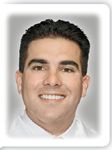Article
Minimally invasive surgery can work in private urology practices
Study demonstrates that laparoscopic and robotic surgical training can be applied to a new private practice setting.

"A private practice, community-based urology partnership can still be a high-volume surgical practice," said Adam J. Ball, MD, who is in private practice with partner Scott Van Appledorn, MD, at Gulfstream Urology Associates, PA, with offices in Fort Pierce and Port St. Lucie, FL.
Drs. Ball and Van Appledorn entered private practice with hopes of utilizing the specialized skills they had learned during 1-year endoscopic/laparoscopic/robotic surgery fellowships.
By reviewing their surgical case volume of their first 20 months in practice, the study authors hoped to show that they were performing what could be considered a high volume of major laparoscopic/robotic cases. They contracted with a for-profit hospital on Florida's east coast, where there was a scarcity of robotic urologic access.
A previously purchased da Vinci robotic surgical system (Intuitive Surgical, Sunnyvale, CA) was relocated to their hospital through negotiations with the hospital's parent company. This enabled the hospital to forego much of the initial start-up costs and the investment in a new robot.
With this partnership completed and the establishment of a new robotic surgery program, the doors opened to the new practice, which now covers a referral area stretching from Melbourne to Boca Raton, FL.
"Some older urologists embraced new technology, and others rejected it," Dr. Ball said. "It seemed difficult to change the ideas and notions of prostate cancer surgery in the minds of those at the end of their careers rather than of those just starting."
Performing above average
In their first 20 months of practice, Drs. Ball and Van Appledorn completed more than 60 major cases, the majority using laparoscopic or robotic surgical techniques (36 robotic prostatectomies, 10 laparoscopic nephrectomies, two robotic pyeloplasties). A laparoscopic approach was used in the majority of patients, averaging three major cases each month and 36 major cases per year. These data surpass those of previous reports showing that a private practice U.S. urologist who performs 10 to 12 major urologic cases per year is in the 90th percentile for major surgical case volume. Drs. Ball and Van Appledorn also performed more than 109 endourologic cases, including 59 ureteroscopies with laser lithotripsy.
The urologists' findings help support the notion that fellowship training allowed them to continue to perform advanced surgical cases in private practice similar to what they had done during their fellowships. They also demonstrated that laparoscopic and robotic surgical training can be applied to a new private practice setting.
Gulfstream Urology now receives a large percentage of its surgical volume from patient-to-patient referral.
"Penetration into a market of established urologists has been a very difficult task," Dr. Ball said. "We brought minimally invasive urology and other technologies to a community that previously had limited access to it."
He concluded that the skills acquired in an endoscopic/laparoscopic/robotic surgery fellowship can bring the surgeries of larger tertiary care centers to communities that may not be near one.




